When it comes to the China Kung Fu tour, it, of course, comes to Shaolin Temple in Henan. As the birthplace of Chinese martial arts, Shaolin Temple opens the door for the fascinating Chinese Kung Fu to the western world. During this Kung Fu tour, you will enjoy a theatric Kung Fu show in Beijing and an authentic Shaolin Kung Fu show in Dengfeng. After the exciting shows, do you want to take a Kung Fu training in China to acquire some Kung Fu skills? If your answer is “yes”, then, this in-depth Kung Fu tour is most suitable for you. The professional teachers in this program will demonstrate the slow moves and teach you step by step. After this Kung Fu training, you will surely amaze your friends when you go back. Don’t hesitate! All you have to do is just join us by choosing this perfect Kung Fu tour.

Today you will arrive in Beijing, and your local tour guide will pick you up at the airport or train station. Then you will be transferred to the hotel for a good rest.
This morning you will begin to explore Beijing by walking around Tian’anmen Square. Tian’anmen Square is located in the center of Beijing. You will see the National Flagpole, the Monument to the People’s Heroes, the Chairman Mao Memorial Hall, and the Zhengyangmen Gate Tower standing in sequence from north to south in the square. Tian’anmen Square is 880 meters long from north to south and 500 meters wide from east to west. It covers a total area of 440,000 square meters and can accommodate 1 million people for grand gatherings. The New China was born here. On October 1, 1949, the founding ceremony of the Central People’s Government of the People’s Republic of China was grandly held at Tian’anmen Square. On that day, over 300,000 soldiers and civilians gathered in Tian’anmen Square. Since then, Tian’anmen Square has become an important place for the Communist Party and the whole country to hold major celebrations, grand gatherings, and official reception of foreign leaders.
Then continue going north and you will come to the Forbidden City (closed each Monday), the imperial palace for the 24 emperors during the Ming (1368-1644) and Qing (1636-1912) dynasties. The Forbidden City covers an area of 720,000 square meters, which is equivalent to the area of one and a half Vatican. Legend has it that there are 9,999 and a half rooms in the Forbidden City. Why is there still half a room? In ancient China, the emperor claimed to be the son of Emperor of Heaven, and it was said that there were 10,000 rooms in the Heavenly Palace where the Emperor of Heaven lived. In view of China’s traditional virtue of respecting the elder, the palace where the son lived could not exceed the palace where the father lived. Therefore, the room number, on one hand, highlighted the emperor’s princely status; on the other hand, it showed his respect for the Emperor of Heaven. Do you have an idea about how large this number is? If a newborn baby sleeps in a different room in the Forbidden City every night, he will be 27 years old after he sleeps in each room for one night.
After lunch, you will go to the Temple of Heaven. The Temple of Heaven was built in the 18th year (1420) of the Yongle period of the Ming Dynasty. It was the place where the emperors of the Ming and Qing dynasties worshipped heaven and prayed for good harvests. The Temple of Heaven occupies an area of about 2.73 million square meters, which is 4 times larger than the Forbidden City. It is the largest surviving ancient building complex for worshipping heaven in the world. Today, the Temple of Heaven has become a place for Beijing residents to relax and exercise and a gathering place for Tai Chi enthusiasts. Tai Chi is a kind of traditional Chinese Kung Fu, which can strengthen the body while fighting against the enemy. It is the most popular martial arts and fitness activity among Chinese people. If you are interested, you can follow them to practice some simple and soft moves and kicks, which are good for your health physically and mentally.
After visiting the Temple of Heaven, you will go to the Hutong for sightseeing. Hutong is the alleyway of Beijing’s old town, where the unique charm of old Beijing is preserved. Taking a rickshaw is the most traditional and relaxing way to know about the old Beijing and Hutong culture. You can see the old people playing Chinese chess in the Hutong, hear the waves of laughter of the children chasing and playing, and smell the scent of the dishes wafting from the Siheyuan (traditional dwellings of local Beijingers). You can also go into a Siheyuan in the Hutong to see what the traditional Beijing-style courtyard is like, chat with the owner, listen to the stories that ever happened in this courtyard, as well as learn Chinese calligraphy, paper-cutting, and so on.
Option: In the evening, you will go to the Red Theater to watch a magnificent Kung Fu show -Legend of Kung Fu. It is a large-scale stage play, performed from 19:00 to 20:10 every day. In the story of the show, a young boy leaves his mother and becomes a little monk named Chunyi in the Shaolin Temple. After continuous growth in Kung Fu by practicing and toughening, he finally becomes a Kung Fu master. This stage play has been performed in the Red Theater since July 2004, and it has been performed for almost 20 years so far. The actors are all Chinese martial arts experts. During the play, they show various kinds of Chinese Kung Fu, such as tiger style boxing, snake style boxing, single-whip, and double-whip skills. Integrating with dance, music, and exquisite stage art, the play highlights the masculine beauty of Chinese Kung Fu. In recent years, the Legend of Kung Fu has become the most frequently performed stage play.
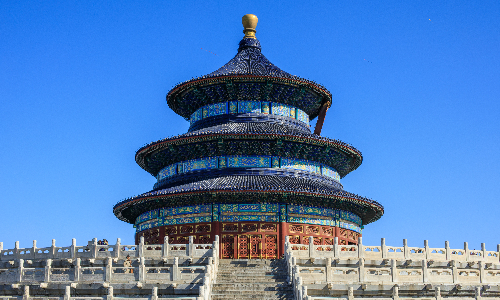

This morning, we will drive northward for about 1 hour to the Ming Tombs, 50 kilometers away from the center of Beijing. 13 emperors of the Ming Dynasty were buried here, so it is also known as “The Thirteen Ming Tombs”. It is the best-preserved imperial tomb cluster with the largest number of emperors buried in the world today.
The first tomb of the Ming Tombs, Chang Tomb is a joint tomb of Emperor Zhu Di and his Empress Xu (the daughter of General Xu Da, one of the founding fathers of the Ming Dynasty). In the fifth year (1407) of Emperor Zhu Di’s reign, Empress Xu passed away, and Zhu Di dispatched the Director of the Board of Rites and Liao Junqing, a Feng Shui (geomancy) master, to find a place with auspicious geomantic omens to be the empress’ mausoleum. They searched around Beijing for more than two years and found a few places for Zhu Di to choose from. It was said that Liao Junqing first recommended a village named Tujiaying (meaning “base camp of butcher’s house”). However, because the emperor’s surname was Zhu (the same pronunciation as the pig in Chinese), Emperor Zhu Di believed that there would be absolutely nothing good other than being killed once the pig entered the butcher’s house. As a result, he vetoed the proposal. Then they chose the place at the foot of the Yangshan (Sheep Mountain) in the southwest of Changping District. It is reasonable to say that the sheep and the pig can live peacefully, but there was a village behind the mountain called “Langeryu” (Wolf Valley). With a wolf staring closely behind the pig, it’s also not the perfect place for the royal tomb. Finally, Liao Junqing found a place at the foot of Huangtu Mountain in Changping, which was accepted by Zhu Di. Zhu Di then changed Huangtu Mountain to Tianshou (Heavenly Longevity) Mountain and built a mausoleum at the foot of Tianshou Mountain, named Chang Tomb.
After lunch, you will be driven to the Great Wall, 40 kilometers east of the Ming Tombs. It takes about an hour to get there. The Great Wall was built by Emperor Qinshihuang, the first emperor of the Qin Dynasty (221-207 BC). It was a defensive military structure built to prevent the nomads in the northwest. From Shanhai Pass in the east to Jiayu Pass in the west, it is more than 6,700 kilometers long. Today we will drive you to Mutianyu Great Wall, one of the best sections of the Great Wall. You can easily go up to the Mutianyu Great Wall by chairlifts or cable cars. Then you can take a stroll on the Great Wall. As a majestic military project, there are shooting mouths, watchtowers, and beacon towers along the wall. The shooting mouth is for the soldiers to shoot at the enemies while hiding behind the wall. The watchtower is for the soldiers to observe the enemies from afar. The beacon tower is built for passing on military information with smoke in the day and with fire in the night. All these components of the Great Wall played important roles in military defense.
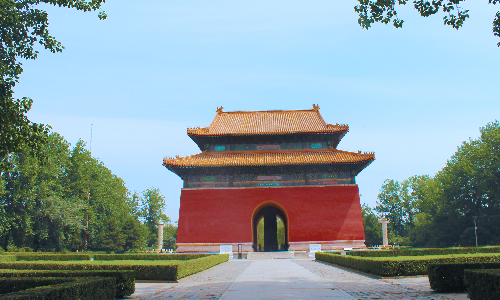
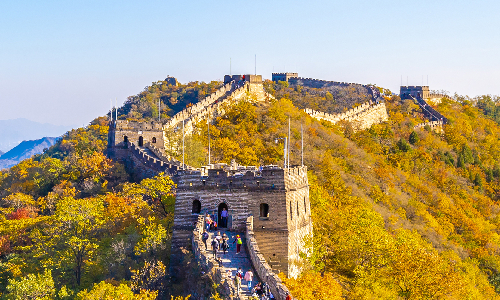
 Zhengzhou
Zhengzhou In the morning, you will be transferred to the airport and head to Zhengzhou by taking the estimated flight CA1391 09:15/11:10. Your tour guide will be waiting for you at the arrival lobby and then transfer you to the hotel.
 Dengfeng
Dengfeng This morning we will drive southwest for about 1.5 hours to the Shaolin Temple in Dengfeng. It’s about 90 kilometers away from Zhengzhou downtown. It is a sacred Buddhist temple and the cradle of Chinese Kung Fu. It was built in 495 by Emperor Xiaowen of the Northern Wei Dynasty (386-534) to house a senior Indian monk for promoting Buddhism. In the Tang Dynasty (618-907), Shaolin Temple was highly valued by the Tang emperors and won the reputation of “The Greatest Temple under Heaven”, which was attributed to the thirteen monks who saved Li Shimin, the second emperor of the Tang Dynasty.
In the second year (619 AD) of Emperor Li Yuan, the first emperor of the Tang Dynasty, Wang Shichong, an uprising general, proclaimed himself emperor in Luoyang in an attempt to fight against the Tang Dynasty. In order to expand his military power, Wang Shichong seized a thousand acres of fertile land originally belonging to the Shaolin Temple and built it into a military base. In 621 AD, Li Shimin, the second son of Emperor Li Yuan, led an army to fight against Wang Shichong. In the beginning, Li Shimin gained the upper hand in the war. At the time when Wang Shichong was about to be defeated, a peasant uprising leader named Dou Jiande led more than 100,000 soldiers to support Wang Shichong. The situation was reversed and not good for Li Shimin. Witnessing Wang Shichong’s brutal rule, the monks of Shaolin Temple decided to help Li Shimin. On April 27, 621 AD, 13 Shaolin monks took action secretly after several days of careful preparation. They sneaked into Wang Shichong’s camp, caught him alive, and brought him to Li Shimin. Without the leader of the army, Wang Shichong and Dou Jiande’s army was routed and finally surrendered. Later, the story of “thirteen monks saving Li Shimin” spread among the people. That’s why Shaolin Temple was greatly respected during the Tang Dynasty.
You can take a walk in the Shaolin Temple to appreciate the magnificent buildings, such as the Great Buddha’s Hall, the Buddhist Scripture library, the Hall of Heavenly Kings, and so on. What’s more, don’t miss the Pagoda Forest, the cemetery of the Shaolin monks. When an eminent monk died, he would be buried here with a pagoda built above the ground. There is a total of over 240 pagodas. Every pagoda is telling the story of the monk buried under it.
In the afternoon, a stunning Shaolin Kung Fu Show will be arranged for you. As a branch of Chinese martial arts, Shaolin Kung Fu is the most famous and influential around the world. Undoubtedly, enjoying a Shaolin Kung Fu show at its birthplace is most memorable. The show will be performed in the Martial Arts Hall by the most professional Shaolin monks. During the show, you will see Shaolin boxing, wooden stick skills, and whip skills. And there are opportunities for you to learn some simple and practical self-defensive Kung Fu skills from the monks. Maybe the potential to become a Kung Fu master will be discovered in you.
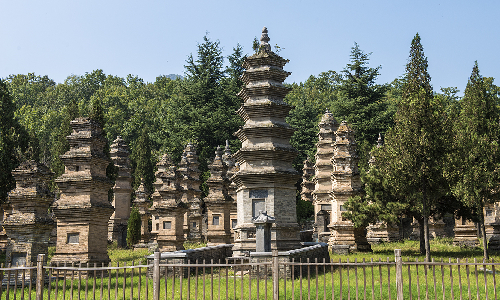
 Zhengzhou
Zhengzhou Wuhan
Wuhan Learning Shaolin Kung Fu may be a longstanding dream for a Chinese Kung Fu fan. Today your dream will come true. In the morning, you will join a Kung Fu Training Program in a Shaolin Kung Fu school. Here you will be taught to acquire some authentic Shaolin Kung Fu skills by professional Kung Fu teachers. This 1-hour Kung Fu Training Program will give you some practical fighting skills and tricks to amaze your family members when you go back home. And you can pose for amazing pictures and post them on your Instagram. Maybe you will receive lots of followers.
After lunch, you will be transferred to the railway station in Zhengzhou. Then you will take the estimated train G2055 14:38/16:38 to Wuhan. Upon arrival, your tour guide will pick you up there and transfer you to the hotel.
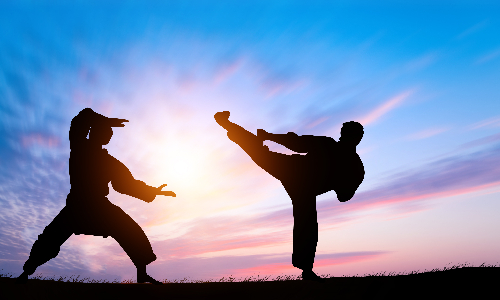

In the morning, we will go to the East Lake Scenic Area of Wuhan to appreciate its beauty. The East Lake Scenic Area is a comprehensive tourist attraction integrating sightseeing, relaxing, and science education. With the large-scale natural lake – East Lake as the core, it has a water area of over 33 square kilometers, six times that of the West Lake in Hangzhou. Since ancient times, East Lake has been a fascinating tourist attraction. Qu Yuan (340-278 BC), a famous patriotic poet of the Chu State during the Warring States Period (475-221 BC), ever composed poems while walking along the East Lake; Li Bai (701-762 AD), the “Immortal Poet” of the Tang Dynasty (618-907), also came here for a visit and wrote a poem on the Fangying Platform within the scenic area. In recent years, many foreign leaders have also visited the East Lake Scenic Area, such as King Philippe of the Kingdom of Belgium, German Chancellor Angela Merkel, former British Prime Minister Theresa May, former French Prime Minister Bernard Cazeneuve, and Indian Prime Minister Narendra Modi. As a business card of Wuhan, the East Lake Scenic Area is waiting for you to appreciate its natural charm with your own eyes.
Then you will go to Hubei Provincial Museum (closed on each Monday) on the west shore of the East Lake to admire the historical and cultural connotation. The Hubei Provincial Museum was established in 1953. It covers an area of 81,000 square meters with a collection of more than 260,000 pieces of cultural relics. There is the largest ancient musical instrument exhibition hall in China. Among the musical instruments, the Chime Bells from the Tomb of Marquis Yi of the Zeng State is the most precious one. It is a cultural relic of the Warring States Period. Composed of 65 bronze chime bells, it has been the best-preserved set of chime bells discovered so far in China, with the largest number of chime bells and the most complete rhythms. This set of unearthed chime bells has important reference and material values for studying the musical instruments in ancient China. For its importance, this set of chime bells is not allowed to be displayed abroad, so maybe this is the first and last time for you to appreciate it.
After finishing lunch, you will visit the Yellow Crane Tower. The Yellow Crane Tower is located on the Snake Mountain by the Yangtze River in Wuhan. It ranks first among the “Three Famous Towers in South China”. The Yellow Crane Tower was first built during the Three Kingdoms period (220-280) and was repeatedly destroyed and rebuilt throughout subsequent generations. The Yellow Crane Tower you see now is rebuilt in 1985, following the style of the Qing Dynasty.
There is a legend about the origin of the Yellow Crane Tower. It was said that a man with the surname Xin had a bistro. One day, a guest in rags came and asked Xin for a drink. Xin served him without prejudice and treated him to a drink for free every day for the next six months. One day the guest drew a yellow crane on the wall in the bistro with orange peels and then left. Something magical happened! This yellow crane could dance to the music, and the guests coming to the bistro paid to watch this wonderful scene. Over ten years later, Xin accumulated a lot of wealth. One day, the rags-clothed guest came back again in a sudden. Xin thanked him and expressed his willingness to provide for him in his old age. The guest smiled without saying anything and then took out his flute and played some tunes. Unexpectedly, the yellow crane on the wall flew to the guest. The guest rode on the yellow crane and flew to the sky. People believed that the guest was an immortal in heaven. In order to commemorate the immortal, Xin built a tower with the money he earned over the past ten years and named it “Yellow Crane Tower”.
Then you will go to Hubu Alley, the food paradise in Wuhan. Hubu Alley is a 150-meter long alley with a history of more than 400 years. It is known as the “Top One Alley of Wuhan-Style Snacks”. The original Hubu Alley was just a dilapidated alley with only 12 snack stands. In 2002, funded by the government, the original Hubu Alley was renovated according to the architectural styles of the Ming and Qing dynasties. Throughout the recent years, it has gradually developed into a characteristic food street, with 340 stores and stalls of various sizes and more than 170 varieties of food. Re GanMian (hot noodles with sesame paste), Dou Pi (pan-fried glutinous rice with minced meat), spicy duck neck, and Tang Bao (a steamed dumpling filled with minced meat and gravy) are the most representative snacks of Wuhan. I strongly recommend you to taste them.
The last attraction you will visit today is Wuhan Yangtze River Bridge. The Wuhan Yangtze River Bridge is a cross-river passage connecting Hanyang District and Wuchang District in Wuhan. It extends across the Yangtze River with a total length of 1670 meters and two layers of bridge decks – the upper layer for road traffic and the lower layer for railway traffic. It is the first road-rail bridge built on the Yangtze River after the founding of the People’s Republic of China and one of the major landmarks in Wuhan. It is also one of the best places to appreciate the night view of Wuhan. You can go up to the bridge deck for sightseeing.
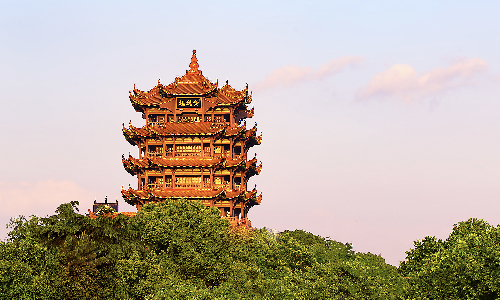
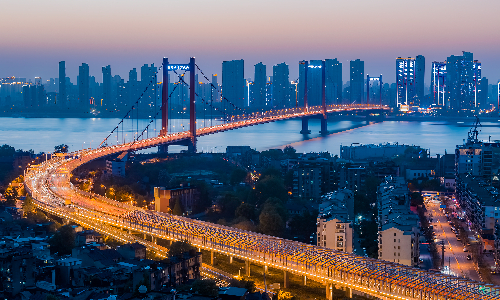
Today your 8-day China Kung Fu tour comes to an end. Your tour guide will accompany you to the airport and say goodbye to you. Then you will board your flight back home.
Author: Lingyun Zhou
Proofreader: Carrie Zhang
| City | Five Star hotel list | Four Star hotel list |
|---|---|---|
| Beijing | Sunworld Dynasty Hotel Beijing Wangfujing | Sunworld Hotel Wangfujing |
| Zhengzhou | Yuda Palace Hotel | Holiday Inn Express Zhengzhou Zhengdong |
| Dengfeng | Hanting Hotel Zhengzhou Dengfeng Songyang Shuyuan | Hanting Hotel Zhengzhou Dengfeng Songyang Shuyuan |
| Wuhan | The Westin Wuhan Wuchang | Holiday Inn Wuhan Riverside |
 |
![]() About your child or infant, please contact us for a discounted price.
About your child or infant, please contact us for a discounted price.



We started with a few days in Beijing & ended in Shanghai, from where we visited the Forbidden City and Great Wall. In between we visited Terra Cotta Warriors Museum, Panda Base, Shanghai Disneyland.

We had a wonderful holiday in China which will remain long in the memory. China is a breathtakingly beautiful country full of splendid temples and palaces, mountains and rivers, peaceful rural scenes and bustling shopping streets.
 QUICK ENQUIRY
QUICK ENQUIRY